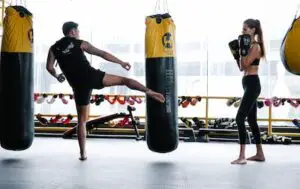Judo is a fascinating sport that originated in Japan and has grown in popularity around the world. As it gained worldwide recognition, different countries developed their own unique styles of judo. Among these styles, the Mongolian judo style stands out for its agility, dynamism, and speed. This style is rooted in the ancient martial arts of Mongolia and has its own distinctive techniques, training methods, and philosophy.
In this article, we will delve into the Mongolian judo style and explore its history, techniques, training, competition, and future prospects. We will answer the following six sub-questions:
What is the history of Mongolian judo style and how did it evolve?
The Mongolian people have a long tradition of martial arts, including wrestling, archery, and horsemanship. Judo was introduced to Mongolia by Japanese instructors in the early 20th century, and the first Mongolian judoka to compete internationally was Tsagaanbaatar Khashbaatar, who won a bronze medal at the 1968 Olympic Games in Mexico City.
Since then, Mongolian judo has grown in popularity and success, with numerous athletes winning medals at world championships and Olympics. The Mongolian judo federation was established in 1990 and has been promoting the sport throughout the country. The style of Mongolian judo is characterized by its fast footwork, rapid changes of direction, and explosive throwing techniques.
What are the main techniques of Mongolian judo style and how are they different from other styles?
The main techniques of Mongolian judo style include leg sweeps, foot sweeps, hip throws, and sacrifice throws. These techniques emphasize agility, speed, and precision, and are designed to catch opponents off balance and throw them to the mat. Mongolian judoka tend to have a low center of gravity and use their legs and hips to generate power and momentum. The style also incorporates ground fighting, with techniques such as turnovers and pins.
Compared to other styles of judo, Mongolian judo is more focused on attacking techniques than defensive maneuvers. It requires a high level of athleticism, explosiveness, and flexibility, as well as strategic thinking and timing.
What are the training methods of Mongolian judo style and how do they develop athletes’ skills?
Mongolian judo training methods are rigorous, disciplined, and holistic. They include both physical and mental training, as well as technical and tactical instruction. Athletes typically train six days a week, with a combination of cardio, strength, and flexibility exercises, as well as judo-specific drills and sparring.
One of the unique aspects of Mongolian judo training is its emphasis on long-distance running, which helps to build endurance, mental toughness, and aerobic capacity. Athletes also do weightlifting, gymnastics, and yoga to develop their strength, balance, and flexibility. Technical instruction includes watching and analyzing videos of top judoka and practicing specific techniques in isolation and in combination.
What are the competitions for Mongolian judo style and how successful are Mongolian judoka in international contests?
Mongolian judoka compete in a variety of domestic and international tournaments, including national championships, Asian championships, and world championships. The most prestigious event for judoka is the Olympic Games, where Mongolia has won several medals, including gold, silver, and bronze.
In recent years, Mongolian judo has become more popular and successful, with many young athletes rising to prominence. Some of the most famous Mongolian judoka include Tuvshinbayar Naidan, who won a gold medal at the 2008 Beijing Olympics, and Mandakhnaran Ganzorig, who won a bronze medal at the 2016 Rio Olympics.
How does Mongolian judo style contribute to the development of martial arts and sports as a whole?
Mongolian judo style represents a unique approach to martial arts and sports that emphasizes agility, speed, and creativity. Its techniques and training methods have inspired other judoka around the world and have contributed to the evolution of the sport. Mongolian judoka are admired for their resilience, mental toughness, and adaptability, which are valuable qualities in any sport or activity.
Moreover, Mongolian judo style has become a source of national pride and identity, as it showcases the strengths and traditions of Mongolian culture. The success of Mongolian judoka in international competitions has also brought attention and recognition to the country, and has inspired many young people to pursue judo and other sports.
What is the future of Mongolian judo style and how will it evolve in the coming years?
The future of Mongolian judo style looks promising, as more athletes are being trained and developed in the country. The Mongolian judo federation is committed to promoting the sport and investing in facilities, coaches, and athletes. Moreover, with the global popularity of judo, Mongolian judoka have more opportunities than ever to compete and showcase their skills on the world stage.
Conclusion
As the sport evolves, Mongolian judo style is likely to continue to adapt and innovate, incorporating new techniques and technologies. However, it will always retain its core values of agility, dynamism, and respect for tradition. Mongolian judo style represents a fascinating and exciting approach to martial arts and sports that deserves recognition and admiration.




